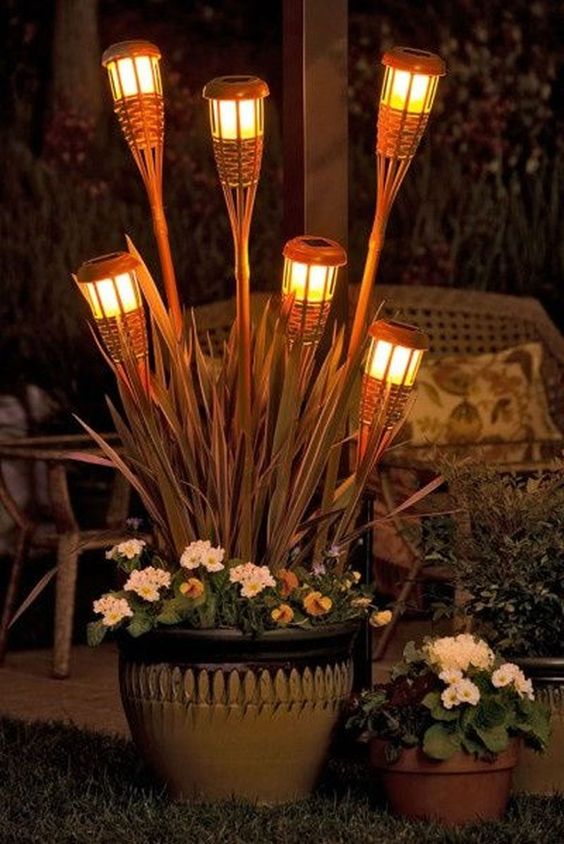Since most outdoor landscape lighting is low voltage, it’s safe and easy enough for any DIYer to install. In fact, the only special tool you’ll need is a wire stripper, however, now many light systems have come out with a quick, screw on coupler.

To prevent accidental cutting of wiring for ground-level fixtures, install wiring after your landscape has been planted. That way you won’t accidentally chop through it with a shovel. Also, don’t install wiring in digging areas like garden beds, and be sure to bury low-voltage wire at least 6 in. below the surface or use a conduit just under the surface.

Expect to pay about four times more for an LED bulb, but they use less energy and you’ll get up to 20 years of life from one compared with only two or three years from a halogen.
Options for solar landscape and deck lights have exploded at home centers. And there are some reasons to love them: instant installation, no wiring and no increase in your electric bill. Just don’t expect the same kind of light you’d get with other systems. Solar fixtures typically produce fewer lumens, which means they’re not as bright.

You can buy complete ground-level landscape lighting kits at home centers. Kits are convenient and adequate if you only need a few fixtures. But the transformer—sometimes called a power pack—will be too small if you decide to add more fixtures down the road, and style options for fixtures will be much more limited with a kit. For a deck lighting system, plan to buy individual components.

Before you buy anything, make a sketch of your deck or patio on graph paper (or use a program like Sketch-Up) and plan the location for each of your new light fixtures. To get an idea of the effect a fixture will give, pick up a clamp light—the kind with a metal reflector shade—and a few different types of lightbulbs with different brightness’s. Then, when it starts to get dark, try out the clamp light using different bulbs in a few different spots so you can observe their effect. Mark the most desirable locations on your drawing and pay particular attention to lighting areas like stairs and transitions to different levels for safety.
